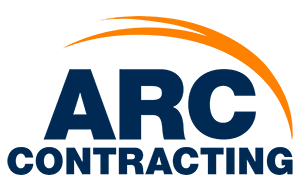How Your Roof Affects Home Value

Will replacing a roof add value to a home?
Short answer: Yes.
Much better answer: Depends. “Adding value” is a politicking sort of phrase that stops well short of “making money.” Replacing a roof is usually smart; it is not always profitable.
For instance …
How the Replacement Roof Affects Home Value.
Case Study 1:
A homeowner wants to make more money when selling her house. Should she replace her functioning 12-year-old asphalt shingle roof?
Probably not. Her roof is relatively young and in the prime of life, since most asphalt shingle roofs last for about 30 years barring Acts of God. If she paid the 2014 national average job cost of $18,913 to replace her roof, she would probably recuperate less than half her investment.
While it may not have an associated dollar value, she would also unnecessarily halve the lifespan of her roof, a wasteful practice that contributes to greenhouse gas production and overloads the recycling system.
Case Study 2:
Now, let’s put that same homeowner in an affluent neighborhood where everyone owns poodles and drives Lexus sedans. Does the situation change?
It might. In general, a new roof improves the value of a home by 15-40 percent, but only if the former roof is in poor, dilapidated condition. Expensive homes play by different rules. Swapping a passé gray asphalt roof for the latest copper roof flashing or concrete tile roof improves the home’s curb appeal – and once the sticker price climbs past $350,000, curb appeal grows exponentially more important.
Case Study 3:
A homeowner is about to put his home on the market. His roof is 17 years old, leaking, and spackled from sunlight exposure. He would rather improve the kitchen than replace the roof. Will the replacement roof affects home value?
Forget the kitchen! Stainless steel appliances and granite countertops are perks, but a leaking roof is a condition issue and will scare buyers faster than a Halloween spook. This is a rare situation in which replacing a roof can both add value and make money. Confused? Say the homeowner recuperates 63 percent of his initial $12,000 investment. He’s still out $4,440, right?
Wrong! Any realtor knows that a roof accounts for 40 percent of a home’s curb appeal. The more appealing a home, the faster it sells, saving the homeowner maintenance costs, realtor fees and other associated costs.
Caution: This strategy is not effective in wildfire realty neighborhoods, such as in Austin, Texas, where homes sell like free funnel cake at an average of 48 days on market.
Case Study 4:
A broken roof sits atop the house of a homeowner in Suburbia, USA. He wants to sell his house fast and move out. Any ideas?
Correct! He should replace his roof! Average Joe prospective home buyer does not want a home burdened by a broken roof. Also, a tattered and battered roof gives a buyer the edge to whittle the asking price down. Selling the home as-is could cost more and take longer than just replacing the roof.
Case Study 5:
Looking into the future some 5-10 years, a homeowner wants to sell her home. Her roof currently leaks into the attic. How does the replacement roof affects home value?
This homeowner has a rare advantage: forethought. She can benefit from both resale savings and lifecycle savings. Whereas the average seller is only concerned with return on investment, she can factor in savings from energy efficiency, quality of life, home financing and preventive maintenance.
- Energy efficiency: ENERGY STAR-certified roofs reflect solar radiation and emit heat at night, helping to reduce annual cooling costs by 10-15 percent.
- Quality of life: Curb appeal, peace of mind, financial planning – these benefits cannot be monetized, but they are important nonetheless.
- Home financing: Some insurance companies will not issue home financing to houses with roofs more than 15 years old. Others will charge a 20 percent penalty for a roof past its prime, and some offer policy discounts for new roof installations.
- Preventive maintenance: Water from a leaking roof can cause mold, mildew, wood rot and soggy insulation. About 70 percent of all water damage in a home occurs at the roof. Over time, rotted joists or beams may collapse, and if the homeowner has failed to keep up with maintenance, the damage may not be covered by home insurance policies. An uninsurable roof drops a home’s value by $5,000 – $7,000.
Replacing a roof is usually smart; whether it is profitable is a separate issue entirely. Some roof replacements merely keep the home from losing value, others make it more marketable, and a select few fatten the piggy bank.



